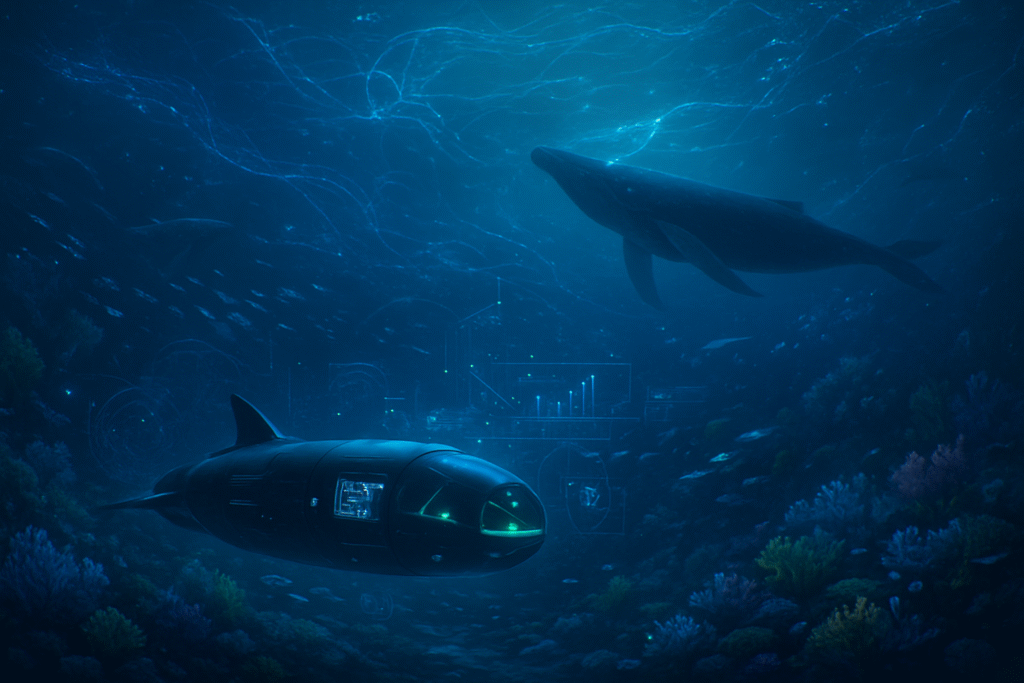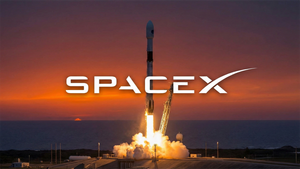
The world's oceans, vast and mysterious, are increasingly becoming a frontier for the most advanced artificial intelligence and machine learning technologies. Recent global conferences, spanning from late 2023 through anticipated events in 2025, have underscored a profound shift in how humanity interacts with the marine environment. AI is no longer a peripheral tool but a central nervous system, driving unprecedented advancements in marine research, deep-sea exploration, and critical conservation efforts, offering an unparalleled opportunity to understand and protect our planet's most vital ecosystems.
This technological wave is enabling scientists and conservationists to tackle challenges that were once insurmountable, from mapping the uncharted depths to precisely tracking elusive marine life and predicting the impacts of climate change. The collective sentiment from these gatherings is one of immense optimism, heralding a new era where intelligent systems provide robust, data-driven solutions for the complex problems facing our oceans.
Unveiling the Deep: Technical Advancements Powering Marine AI
The technical canvas of AI in ocean technology is broad and rapidly evolving, marked by sophisticated algorithms and integrated systems discussed at forums like the IEEE OES Autonomous Underwater Vehicle (AUV) Symposium 2024 and the Ocean Sciences Meeting (OSM) 2024. A key area of innovation lies in Autonomous Underwater Vehicles (AUVs). Machine learning, including supervised, unsupervised, and reinforcement learning, is revolutionizing AUV navigation and control. These intelligent systems can now make reliable decisions and perform real-time obstacle avoidance in complex, unknown underwater environments, a significant leap from previous, more pre-programmed approaches. For instance, research presented at the AUV Symposium detailed Bayesian optimization-based self-improving controllers and hybrid switching control using Past-time Signal Temporal Logic, enhancing vehicle autonomy and energy efficiency.
Sensor fusion and imaging have also seen dramatic improvements. Deep learning algorithms, combined with data from sonar and high-resolution cameras, enable precise underwater landscape perception and mapping. Adaptive image restoration and object detection using semantic segmentation are allowing AUVs to collect and interpret visual data with unprecedented clarity, even in challenging low-light and murky conditions. This capability differs starkly from older methods that relied on simpler sonar pings and less sophisticated visual processing, often yielding fragmented or unclear data. Furthermore, AI is crucial for data analytics in oceanography, as highlighted at OSM 2024. It facilitates data-driven reconstruction, integrity checks, prediction, and forecasting of multi-scale oceanic processes. AI-based model parameter optimization, data assimilation, and bias correction in oceanographic and coupled ocean-atmosphere numerical models are providing robust solutions for complex problems, offering more accurate and comprehensive insights than traditional statistical methods alone. The upcoming International Conference on AI for the Oceans 2025 (ICAIO 2025) is expected to further delve into themes like underwater robotics and IoT, satellite oceanography, and AI-driven climate forecasting, solidifying these technical trajectories.
Riding the Wave: Impact on AI Companies and the Tech Landscape
The burgeoning field of AI in ocean technology presents significant opportunities and competitive implications for a diverse range of companies, from established tech giants to agile startups. Companies specializing in marine robotics and autonomous systems stand to benefit immensely. Firms developing advanced AUVs, Autonomous Surface Vessels (ASVs), and Unmanned Aerial Systems (UAS) capable of AI-driven navigation, data collection, and multi-vehicle coordination are poised for growth. This includes companies like Kongsberg Gruppen (OSL: KOG), known for its maritime technology, and numerous specialized robotics startups that can integrate cutting-edge AI for enhanced autonomy and operational efficiency.
The demand for sophisticated AI/ML platforms and data analytics solutions tailored for oceanographic data is also skyrocketing. Companies providing AI frameworks for processing vast datasets from satellites, in-situ sensors, and AUVs—enabling everything from predictive modeling of ocean currents to identifying marine species—will find a fertile market. This could include cloud providers like Amazon (NASDAQ: AMZN) Web Services, Microsoft (NASDAQ: MSFT) Azure, and Alphabet's (NASDAQ: GOOGL) Google Cloud, which offer the computational power and AI services needed to handle such immense data volumes. Furthermore, startups focusing on AI for environmental monitoring and conservation technology are emerging as key players. Their innovations in areas like acoustic monitoring for marine mammals, AI-powered image analysis for coral reef health, and predictive models for illegal fishing activities are disrupting traditional, labor-intensive approaches to conservation. The competitive landscape will favor companies that can demonstrate robust, scalable, and ethically sound AI solutions that can operate effectively in the challenging marine environment, leading to strategic advantages for those with specialized domain expertise and advanced AI capabilities.
A Deeper Understanding: Wider Significance and Broader Trends
The integration of AI into global ocean technology represents a pivotal moment in the broader AI landscape, aligning with overarching trends towards increased autonomy, big data analytics, and sustainable AI applications. This development significantly enhances our capacity for climate change mitigation and forecasting. By leveraging AI to process vast amounts of environmental data, scientists can achieve more accurate predictions of sea-level rise, ocean temperature fluctuations, and the impact of climate events, providing crucial insights for global policy-making and adaptation strategies. This marks a profound shift from less precise, model-driven predictions to data-intensive, AI-enhanced forecasting.
Moreover, the advancements directly contribute to global marine conservation efforts. Initiatives like the "AI Marine Conservation Technology Transforms Ocean Protection Across Latin America," showcased in early 2025, exemplify the tangible impact. Through platforms like the Marine Manager Portal by Global Fishing Watch, AI and big data are being used to protect millions of square kilometers of ocean ecosystems, dramatically reducing illegal fishing activity and monitoring marine species. The ability to track animal telemetry (sharks, whales, turtles) and map underwater features (mountains, corals, mangroves) with AI-powered systems is a significant milestone, supporting ambitious global agreements like the "30×30" initiative to protect 30% of the world's oceans by 2030. While the benefits are vast, potential concerns include data privacy regarding vessel tracking, the ethical implications of pervasive AI monitoring, and ensuring equitable access to these advanced technologies to prevent a widening "digital divide" in conservation capabilities among nations. Nevertheless, these developments mark a significant stride comparable to earlier AI breakthroughs in medical imaging or natural language processing, extending AI's problem-solving capabilities to one of Earth's most critical and complex environments.
Charting the Course: Future Developments and Expert Predictions
Looking ahead, the trajectory of AI in ocean technology promises even more transformative developments. In the near term, experts predict a continued refinement of multi-vehicle coordination systems, where fleets of AUVs, ASVs, and even aerial drones will operate synergistically, guided by advanced AI, to cover vast ocean expanses more efficiently for research and monitoring. This will involve sophisticated algorithms for swarm intelligence, dynamic path planning, and real-time data sharing among diverse autonomous platforms. The International Conference on AI for the Oceans 2025 (ICAIO 2025) is set to be a key forum for discussing these integrated systems and their implications for large-scale ocean observation.
Longer-term, we can expect the emergence of truly adaptive and self-learning marine AI systems that can autonomously respond to unforeseen environmental changes or discover novel phenomena without constant human intervention. This could include AI-driven deep-sea exploration robots capable of identifying new species or geological formations on their own, or conservation systems that can predict and prevent environmental disasters before they occur. Challenges that need to be addressed include improving the robustness of AI models in highly dynamic and unpredictable underwater conditions, developing more energy-efficient AI hardware for extended missions, and establishing international standards for data sharing and ethical AI deployment in marine contexts. Experts predict that the next decade will see AI not just assisting oceanographers, but actively leading discoveries and management strategies, making the ocean a truly "smart" environment. The "Machine Learning Approach to Control an Autonomous Underwater Vehicle" conference in April 2025, for instance, highlights the ongoing focus on AI-driven adaptive control for enhanced AUV performance, hinting at more resilient and efficient autonomous platforms on the horizon.
The Ocean's New Horizon: A Comprehensive Wrap-up
The rapid integration of AI and machine learning into global ocean technology marks a pivotal moment in our efforts to understand, explore, and protect the world's oceans. Key takeaways from recent conferences and ongoing research include the revolutionary impact of AI on AUV navigation and control, advanced sensor fusion and imaging for unprecedented underwater perception, and the transformative power of AI in processing vast oceanographic datasets for climate forecasting and marine conservation. This technological surge is not merely an incremental improvement; it represents a fundamental shift in our capabilities, enabling more precise, autonomous, and data-driven approaches to marine science.
The significance of this development in AI history cannot be overstated. It demonstrates AI's expanding role beyond traditional computing domains, proving its efficacy in highly complex, real-world environments. The ability of AI to unlock new insights into ocean processes and provide actionable solutions for conservation places it at the forefront of environmental stewardship. In the coming weeks and months, we should watch for continued advancements in multi-vehicle autonomy, the development of more specialized AI models for unique marine challenges, and the increasing adoption of AI-powered platforms by governmental and non-governmental organizations alike. The ocean's future, once largely unknown, is now being illuminated by the bright promise of artificial intelligence, heralding an era of deeper understanding and more effective protection for our planet's most vital resource.
This content is intended for informational purposes only and represents analysis of current AI developments.
TokenRing AI delivers enterprise-grade solutions for multi-agent AI workflow orchestration, AI-powered development tools, and seamless remote collaboration platforms.
For more information, visit https://www.tokenring.ai/.


















